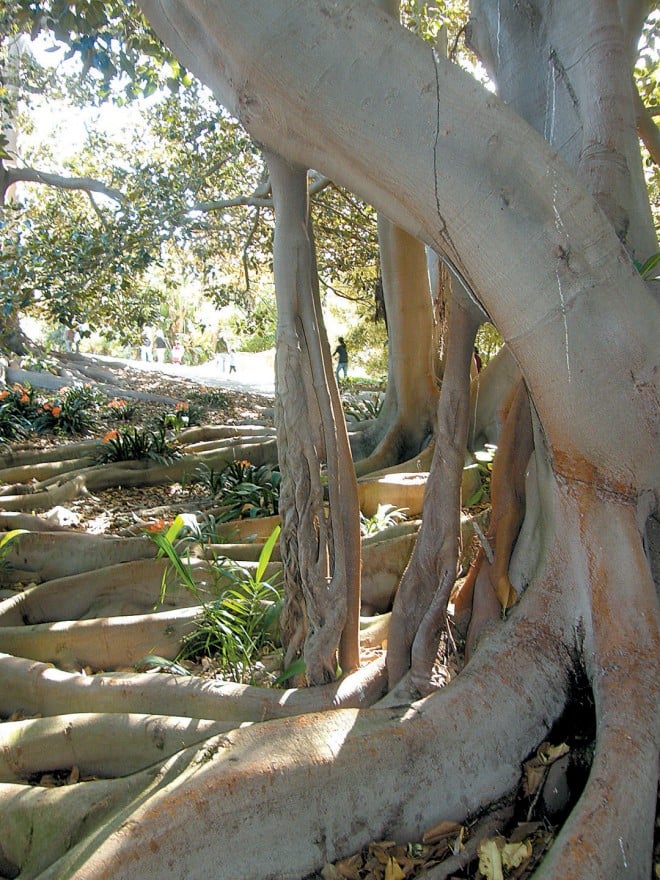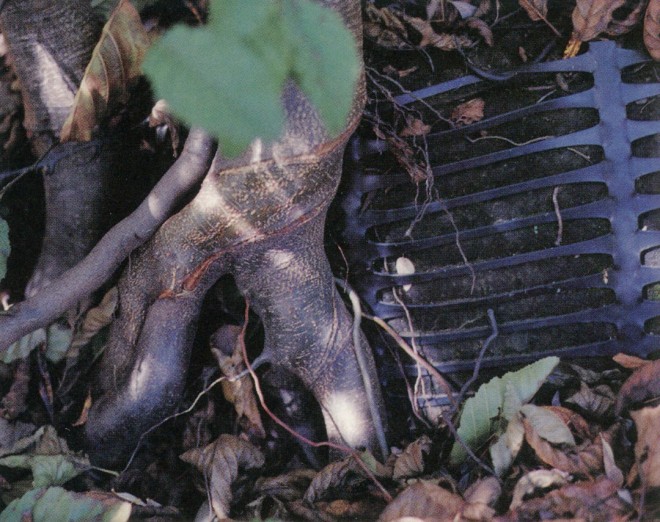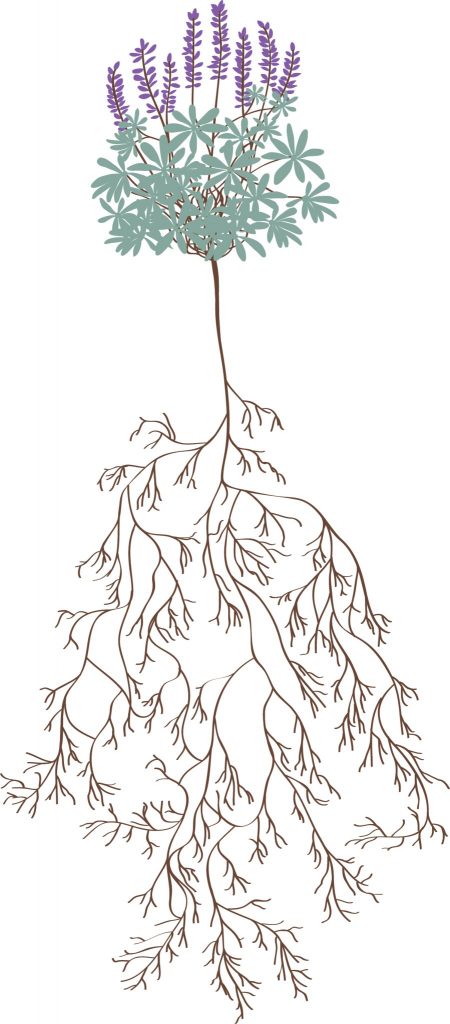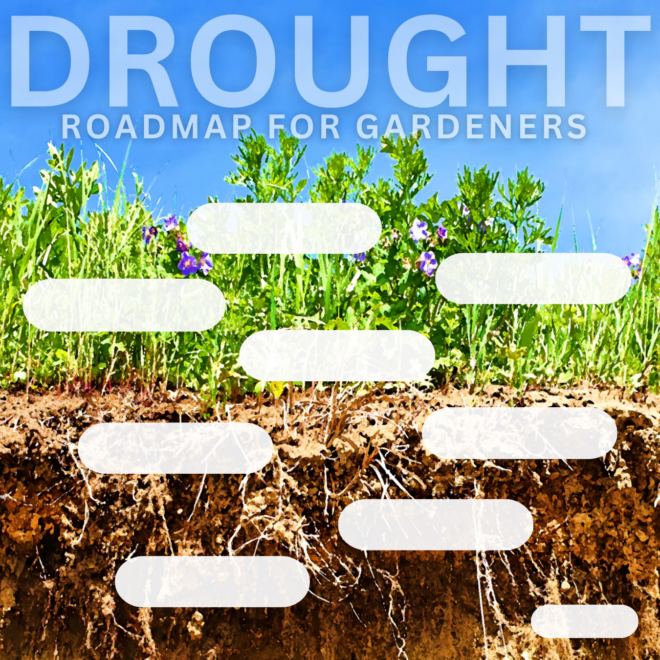
Drought Roadmap for Gardeners: Roots
Contributor
ROOTS INTRODUCTION
Roots are the connection between the earth and our plants. They are the support system for our plants. They are not unlike conveyor belts, bringing up nutrients and water, but also sending secretions called exudates back down to communicate with and support the life in the soil. If roots are encouraged to grow deeply, they’ll become a better protected, more stable support system. If they’re too shallow, they’re vulnerable to the whims of circumstance.
Take, for example, the roots of a plant that is watered on a schedule where the moisture reaches down a couple of inches below the surface. Where do you think the roots will stay? How many times have we read articles saying that the majority of plant roots are within the top 12 inches of soil? Is that because that’s the limit of what roots can do, or because that’s how deeply we watered them?
I like to think of roots as requiring the patience of pet-training. If I train them to go deep, they’ll eventually get the trick, but it takes a while. I’m sure those same roots could more easily stay close to the surface, but in a heat wave, the moisture will evaporate faster and those roots will not have the same resourcefulness as those that went further down. According to Robert Kourik in his 2008 book Roots Demystified, the taproot of a carrot can reach 7.5 feet—a carrot! What could the root of a tree or shrub do if encouraged? Even the master gardener materials about vegetable gardens consider shallow rooting to include depths down to 24 inches and deep rooting to be in excess of 48 inches.


While the root system of our plants is effectively invisible because we don’t have X-ray vision to see through the soil, we owe it to our gardens to help them put roots down as deeply as they can. We can encourage them to become more resilient and resourceful.
A common misunderstanding about plants is that they grow like a computer program in automatic and predetermined ways. This probably stems from the idea that there’s a particular size of stems and leaves above ground and a corresponding network or shape of the roots below ground. The arrangement of roots isn’t as predictable as flower color or seasonality. The roots, whatever kind they are, respond to their conditions the best they can to support their aboveground counterparts. What we might misunderstand is that there’s a fair amount of individuality between each separate plant as they grow and adapt to their conditions. They’ll follow the rewards of moisture, nutrients, and pore space for respiration in order to do their job.
The connection between roots and drought is obvious. Go to the beach on a hot day and push your toes down into the sand. The surface could burn your feet, but just underneath it is cooler and maybe even damp if you squish down far enough. Something similar is going on with your plants, plus their own foliage can help shade the surface and keep things from getting too heated. Mulch and leaf litter aid in this effect, and the soil can stay pretty comfy in a heat wave if it is shaded—at least more habitable than without those benefits.
What is less obvious is that when we chop roots up by tilling the soil—
or transplant and cut the roots off,
or fertilize too much and burn or desiccate them,
or overwater them and flood the air spaces in the soil,
or compact the soil by walking on it,
or pave over the rootzone,
or water shallowly without checking infiltration,
or remove leaf litter,
or fail to mulch,
or forget to pull weeds that would compete with the roots

—we are hampering the ability of our beloved plants and whole gardens from having enough of a root system to deal with drought, heat, and other stress events. This section on roots will focus below the surface to take a look at root systems and how we can protect them from damage, helping them reach their potential so our gardens will have the needed resources to not only get by, but thrive.
Resources
Kourik, Robert. 2008. Roots Demystified: Change Your Gardening Habits to Help Roots Thrive. Santa Rosa: Metamorphic Press.
University of California Cooperative Extension and Los Angeles County Division of Agriculture and Natural Resources. “Vegetable Root Depth—to Gauge Watering Depth.” [pdf]
CLICK ON THE TOPICS IN THE IMAGE BELOW TO EXPLORE EACH SECTION











Responses